Media | Articles
A rare glimpse inside the modern DeLorean Motor Company
The DeLorean Motor Company stopped selling its now-iconic sports car in 1983. The stainless-bodied, gullwing-doored DMC-12 remains inseparable from both the cocaine scandal of its creator and the Back to the Future movie franchise, but if you own one, you probably spend far more time thinking about parts and service. And those, thankfully, never went away.
Since 1995, the DeLorean Motor Company name has been owned by a firm in Houston. Their “aftersales” efforts have helped keep an orphan model alive in public goodwill, but it’s no stretch to suggest those efforts have also helped the brand brush off a complicated past and capitalize on the present.
Put another way, if Back to the Future was the DMC-12’s quarterback, Texas DMC is the car’s go-to running back.
You may have heard that multiple new DeLoreans are claimed to be headed for production, and from multiple companies. To avoid confusion, the Texas firm is generally referred to as “Classic DMC.” It was founded by English expat Stephen Wynne, with its first location in Canoga Park, California, back in 1985. The operation grew from there, moving in 1988 to a new facility in Alief, a middle-class suburb of Houston. Which, believe it or not, is also where I grew up.
According to Google Maps, I lived a whopping 4.3 miles from Classic DMC, albeit back when the company was called DeLorean One. I vividly remember rolling past their extremely busy shop on a regular basis, thanks to my freshly minted driver’s license and a job delivering airline tickets to globe-trotting Houstonians. One such customer was even located in the same office district as DeLorean One, so I truly regret not having the nerve to stop and introduce myself.
Marketplace
Buy and sell classics with confidence
Regrets make way for resolutions, though, and luckily, Classic DMC stayed in town. The company’s current facility is 14 miles north of downtown Houston, offering sales, service, parts, accessories, and support.
Aside from the lack of high-pressure sales tactics, Classic DMC closely replicates the experience and layout of a full-service car dealership. But no dealership ever scooped up a carmaker’s entire parts cache, acquired the rights to that carmaker’s name, and then began reproducing factory parts for owners around the world. (The creation of Avanti Motors after Studebaker’s divestiture might be a relevant counterpoint.)
Although there’s a small DeLorean Museum on the premises, the exhibit is currently closed to the general public. That said, Classic DMC’s president, James Espey, was recently kind enough to host Hagerty for a tour. Our shared love of the Zimmer Quicksilver (of all things!) fostered this invitation, and he was happy to bring our readers along for the ride.
***
Sajeev Mehta: How did DMC’s legacy survive between the original 1982 bankruptcy and Stephen Wynne’s acquisition years later?
James Espey: DeLorean Motor Cars of America [DMCA, the company’s corporate center] and DeLorean Motor Cars Limited [DMCL, the factory in Northern Ireland and the purchasing offices in Coventry] were two separate entities insofar as the bankruptcy.
A company called Consolidated International, now known as Big Lots, acquired virtually all the assets of DMCA as well as the unsold cars and parts of both DMCA and DMCL. [All that was] shipped to the USA in 1983.
Consolidated International continued to sell DeLorean cars through the existing dealer network, and later directly to consumers, until the last one was sold in 1985.
SM: Wow—the company behind closeout household items cut their teeth on DeLorean parts?
JE: Yes, but the parts were quickly sold off to another company called Kapac, in Columbus, Ohio. So beginning in 1983, anyone, dealer or owner, could call up Kapac and order parts. About that same time, Stephen Wynne, then the owner of a French and English auto repair facility in Southern California, partnered with a retired DeLorean owner to form a company called DeLorean One.
This is one of the first dedicated DeLorean-only service and parts companies. In the late 1980s, Stephen opened a second DeLorean One here in Houston.
DeLorean One was a large customer of Kapac, and when Kapac started making rumblings about wanting to get out of the DeLorean parts business, Stephen was interested. If for no other reason than to guarantee the future of his own business. His partner in DeLorean One was getting on in years, having retired once before, and was less interested in taking on the entire DeLorean parts inventory. So they parted amicably and [in the 1990s,] Stephen worked a deal with Kapac to acquire the DeLorean parts, the engineering drawings, and other records, along with some surviving tooling.
It’s important to remember that the original DeLorean Motor Company was still in bankruptcy at that time, as the trustees were in a long legal battle with auditors. So it really was a leap of faith when Stephen agreed to give up his established brand, DeLorean One, to [rebrand as] DeLorean Motor Company in 1995. I can remember when I first started here, in the summer of ’99—I was getting phone calls from collection agencies that thought we were the original DeLorean Motor Company!
In the early 2000s, the two-headed monster of our service and restoration facility in Texas, and the vast majority of our parts inventory—millions of parts across 2800-plus SKUs—residing in a century-old former buggy factory 1200 miles away, became impossible to overlook. It was time to move it all to Texas.
We built a new, 40,000-square-foot service, restoration, and parts warehouse in northeast Houston in 2000–01. It was about 80 tractor-trailer loads of parts and a couple flatbed trailers of tooling and molds.
SM: With all the talk of new models, how does Classic DMC fit into the DeLorean landscape?
JE: “Classic DMC” and DeLorean Motors Reimagined (DMR) are two separate entities and have separate ownership structures. (DeLorean Motors Reimagined is one of the two outfits currently working on a new EV under the DeLorean name. The other company is Kat DeLorean’s DeLorean Next Generation Motors. —Ed.)
Stephen Wynne, who traces his history with the DeLorean back to 1983, is the owner of DeLorean Motor Company [i.e., Classic DeLorean]. He has a minority ownership position in DMR. We see the two companies as complementary—the Classic will always be the original, the one and only, [while] the new model will be the next chapter in the DeLorean story. As my favorite musician, John Mellencamp said, “There is nothing more sad or glorious than generations changing hands.”
Here at Classic DMC, we’re as busy as ever: 40-plus cars in the service and restoration department, and another 40 or so on the waiting list. Our restored cars for outright sale are 14 to 18 months out from delivery. Reproduction parts are continually being brought to market, as we’re in a unique position: Regardless of how much we sell, our inventory on hand continues to grow.
A good example is how we finally sold out of all the [new old stock] gas caps last year. While [the cap] wasn’t bespoke for DeLorean, even the aftermarket had given up on them. So we had to go out and have them reproduced. It gave us the opportunity to update the materials used, in order to improve the part while not changing the looks. We ended up having a couple thousand made. And that’s a regular occurrence.
When we sell the “last” of something, we can’t just go out and buy one more—it is hundreds or thousands more. That’s how our on-hand inventory and overall parts availability keeps growing.
SM: What’s the owner community like?
JE: The DeLorean community is a great group of people, by and large. Similar to the other single-marque clubs I’ve been part of over the years. I attended my first DeLorean club event in 1985, and a decade or so later, I founded the Arizona DeLorean Club, which is still going strong today.
Every national DeLorean event is like a big family reunion for owners and enthusiasts. With social media so prevalent now, these in-person events are even more fun to attend. Once or twice each decade, there is an owners’ event at the old factory and test track in Northern Ireland, too.
SM: Are the owner demographics changing, since the originals were made in the early 1980s?
JE: Then and now, the demographics were/are all over the place! Teenage to nonagenarian, all genders, races, and ideologies. In the ’80s, it was skewed to mostly higher-income types, not surprising when you consider the car was $25K-plus when new, which is more than $75K in 2022 dollars. Then and now the underlying trait is that—regardless of age—they have a very good understanding of modern technology, which Stephen refers to affectionately as the “geek factor.”
In the late ’80s and into the early 2000s, when values were at their lowest, many cars found new owners. They are the ones that really carried the marque through those lean years. Also during that time, lots of cars were exported (fewer than 100 of the original 8975 units were sold outside of the USA), which gave the DeLorean first-hand exposure in the rest of the world. It’s an opportunity that the car never had under John DeLorean’s tenure.
SM: How has the car’s reputation changed over time?
JE: It was the best of times, it was the worst of times! At one point, as the car was being introduced, in 1981, it was touted as “the world’s most talked about car.” Then, after John DeLorean’s arrest in October 1982, up through his acquittal in August 1984, it was the world’s most talked about car, but for all the wrong reasons!
In the summer of 1985, the car’s uncredited starring role in Back to the Future made it a timeless cultural icon. It really wasn’t until the late aughts and early 2010s when the car started to be seen as less of a punchline or movie prop, and more of a “car guy’s car.”
The affordability, and the availability of parts and service, along with the internet making information about the car and community easy to access, it only helped that sentiment grow.
SM: What modifications do people do these days—especially those to make the cars more usable and practical?
JE: Throughout production, nearly 9000 cars, there were more than 3000 running changes. Some large and noticeable, others that even a seasoned DeLorean owner may not notice. By virtue of having 40-odd years of experience with the cars, we’re in a good position to know what goes wrong from use, abuse, or lack of use.
There are some original components that weren’t up to their assigned task. Power window motors, coolant-overflow bottles, alternators, some relays and circuit breakers. All of which have been known for years and are commonly addressed. But now other parts are succumbing to age, and lack of use, as so many [of the cars] were bought after DeLorean’s demise and put away for years. Once storage or abuse issues are tended to, the cars are pretty stout in terms of reliability, when properly maintained.
Common upgrades and modifications that we’ve been doing for decades include shocks and springs to improve performance and appearance, along with performance upgrades to the stock PRV [V-6]. Another thing is power steering, something the original DeLorean didn’t have. That’s now available and a popular modification, too.
SM: What are the rough costs of work like that?
JE: Suspension upgrades can range from a few hundred to over a thousand. Performance work [ranges from] $2000 to $10,000 based on the work being completed. Electric power steering is user-installable with basic tools and comes with fully illustrated instructions for about $2000, as well.
SM: Do you have anything up your sleeve that will make the DMC-12 more true to the original concept’s goals? In other words, more like the dream, less like the reality that saw production?
JE: We’re always looking at ways to improve the reliability and driving experience of the DeLorean without changing the look of the car. It’s also important to us that, wherever possible, any changes are either “invisible” to the eye or easily reversible.
In other words, we won’t cut up a DeLorean chassis to make just any engine fit. Even now, a stock DeLorean commands a far higher value than one that has been modified.

SM: What unique parts are you making these days? What have you made in the past?
JE: More than a decade ago, we developed a modern, microprocessor-controlled fuel pump and sender module that provides greater accuracy and is far more resistant to one of the most common DeLorean maladies, fuel-tank contamination caused by bad gas. About 25 percent of all DeLoreans built are now running one of our modules. We also brought to market a microprocessor-controlled automatic-transmission computer, for more reliable operation and slightly more aggressive shift points.
The order of the day at the original DMC was that any item you could see, touch, or feel should be unique to the car. Other things, like suspension, brakes, drivetrain, and so on, should be the best parts available at the best prices.
Typically, this meant parts that were also used on other, higher-volume production cars. Reproductions of “no longer available” original parts are therefore a mix of parts unique to the DeLorean and parts that were “shared” with other makes and models that the OEMs no longer supply. And that the aftermarket has given up on, too.
JE: For either, that’s where having the complete set of factory drawings and engineering records is great. While they’re all pen-on-paper, 2-D drawings, they’re an invaluable tool to use, along with original parts, when [our] CAD work is being done. We actually have a former DMC engineer who takes these drawings and samples and re-creates them as 3-D models. From there, we 3-D print samples in various materials for validation. There’s usually a couple rounds of back and forth, as we apply our experience with the cars to improve the parts in design or materials or ease of manufacture.
We have supplier relationships, going back decades in some instances, all around the world. Finding quality suppliers that are willing to work with low-volume quantity needs, as well as balancing tooling expenses, is a big part of what we do.
***
My goodness, how times have changed for the DeLorean Motor Company! The sheer volume of the marque’s fans on social media suggests that your perceptions of the brand might not reflect the reality of its community.
No matter—it’s beyond clear that the bad old days are left to the history books and newspapers. To wit:

That was then. The reality now couldn’t be further from the truth. Classic DMC survived and thrived. Between the Back to the Future movies and the rise of Synthwave car culture, the new age of DeLorean is brighter than anyone could have imagined.
Well, almost anyone.

***
Check out the Hagerty Media homepage so you don’t miss a single story, or better yet, bookmark it. To get our best stories delivered right to your inbox, subscribe to our newsletters.












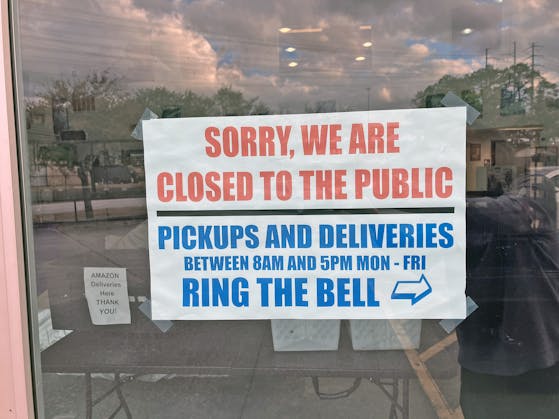













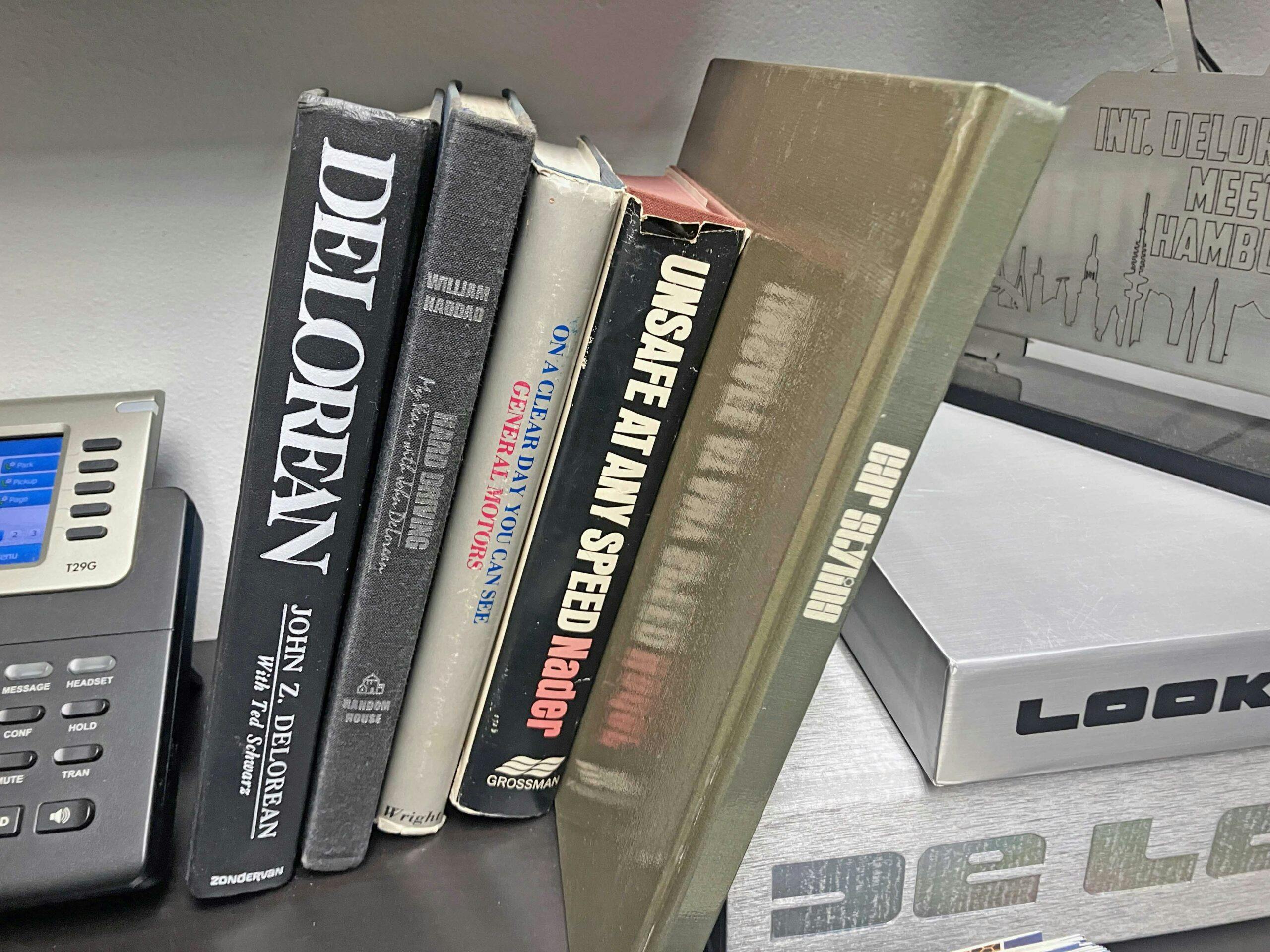






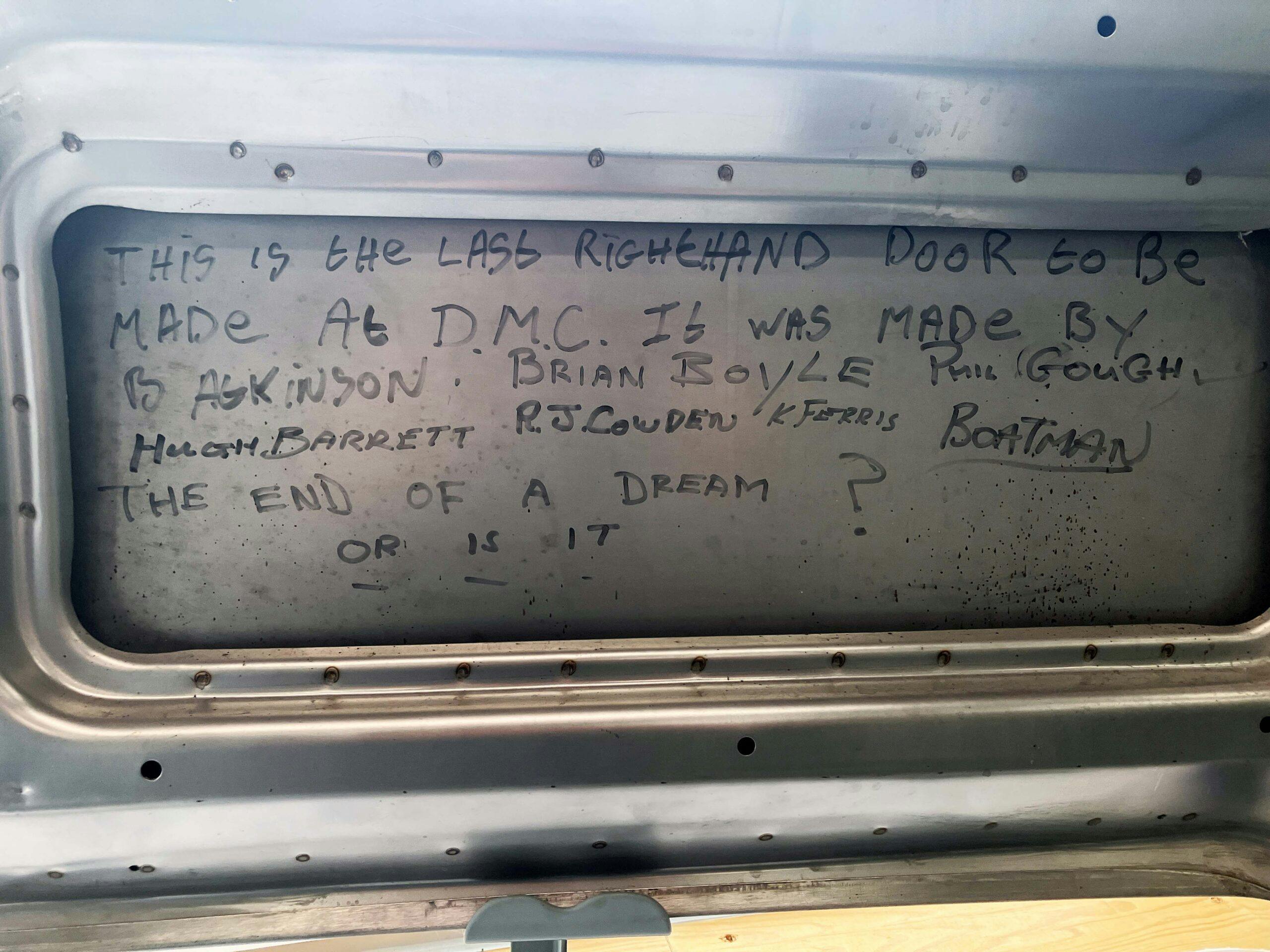

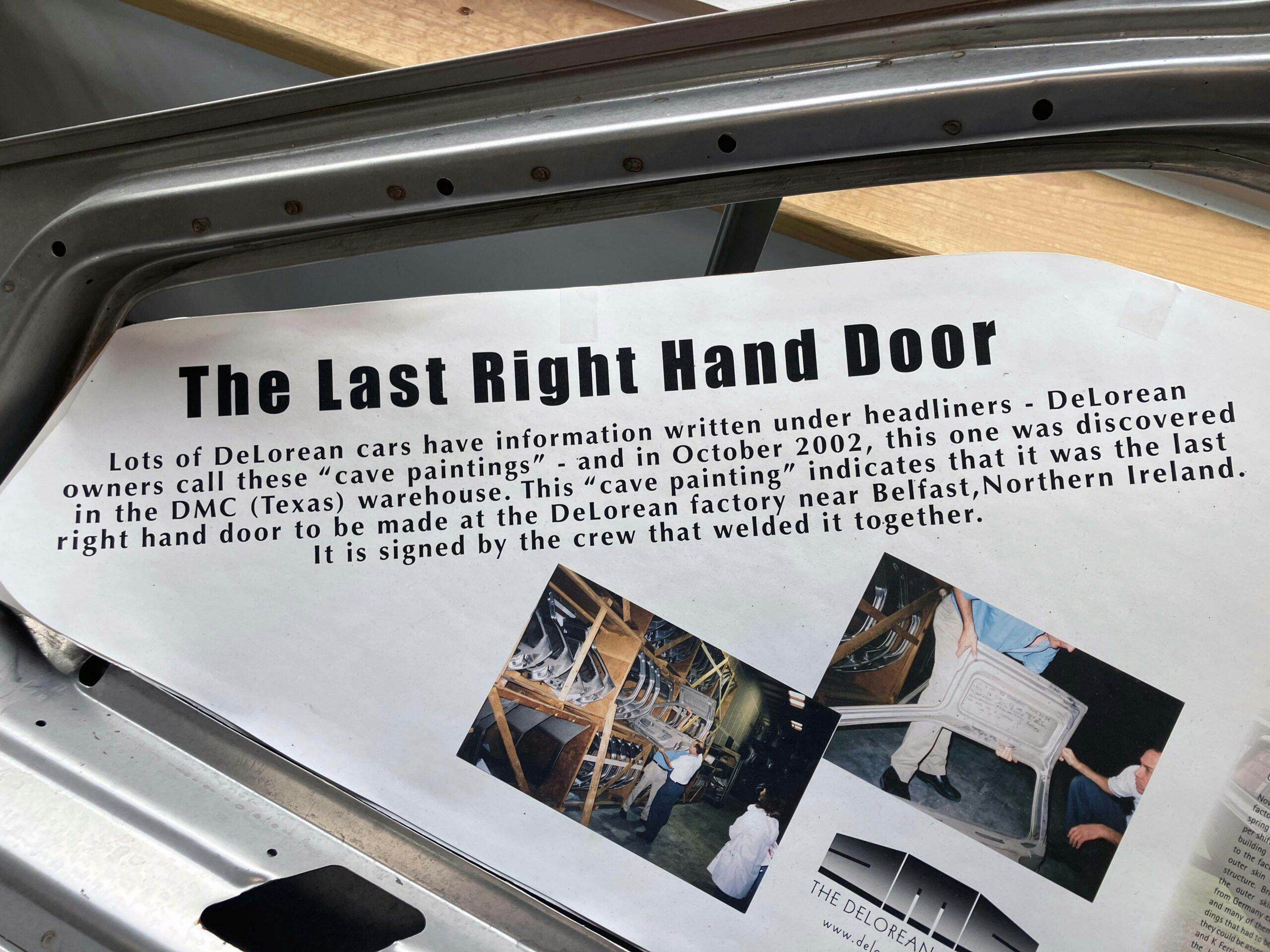

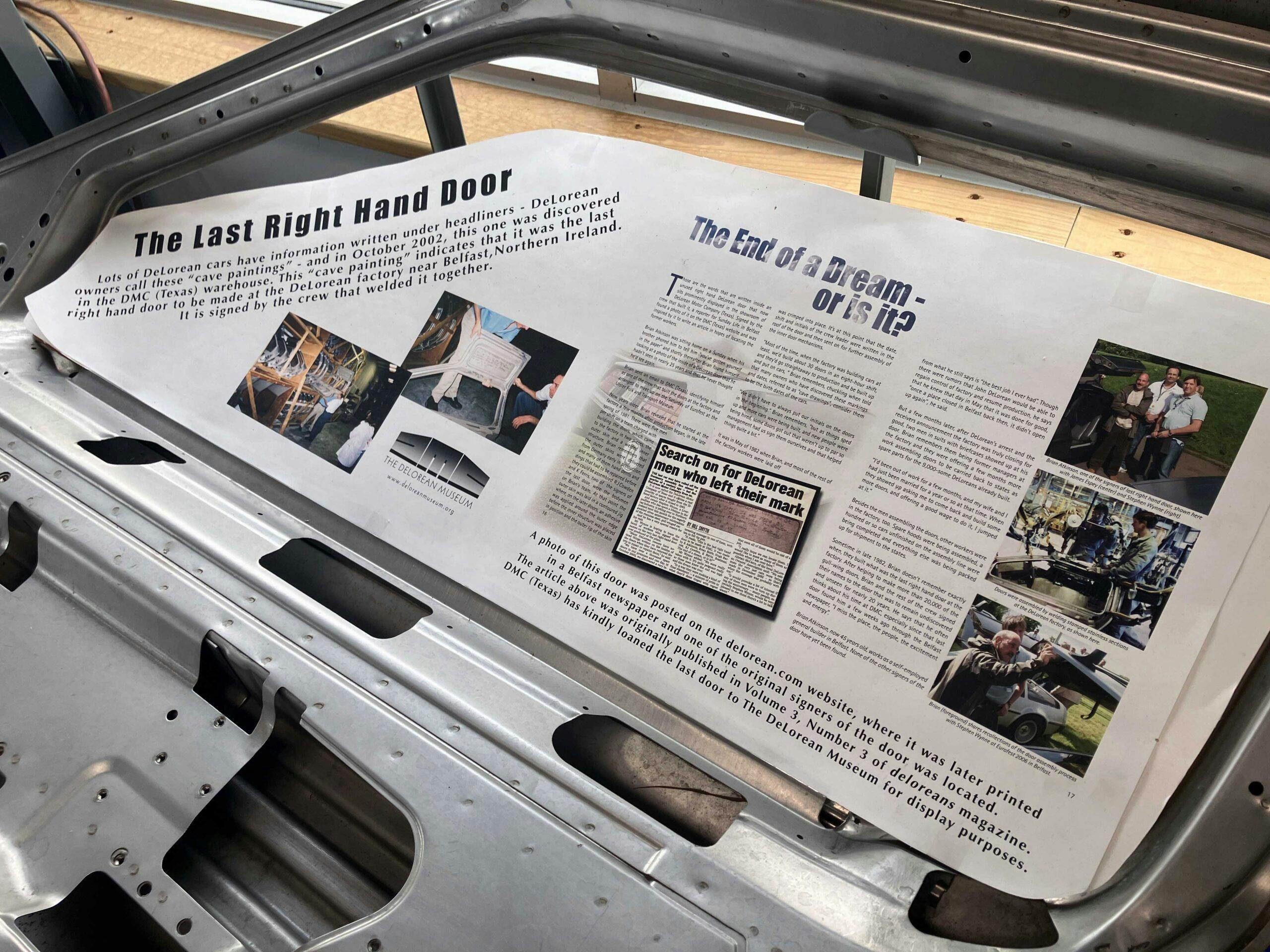





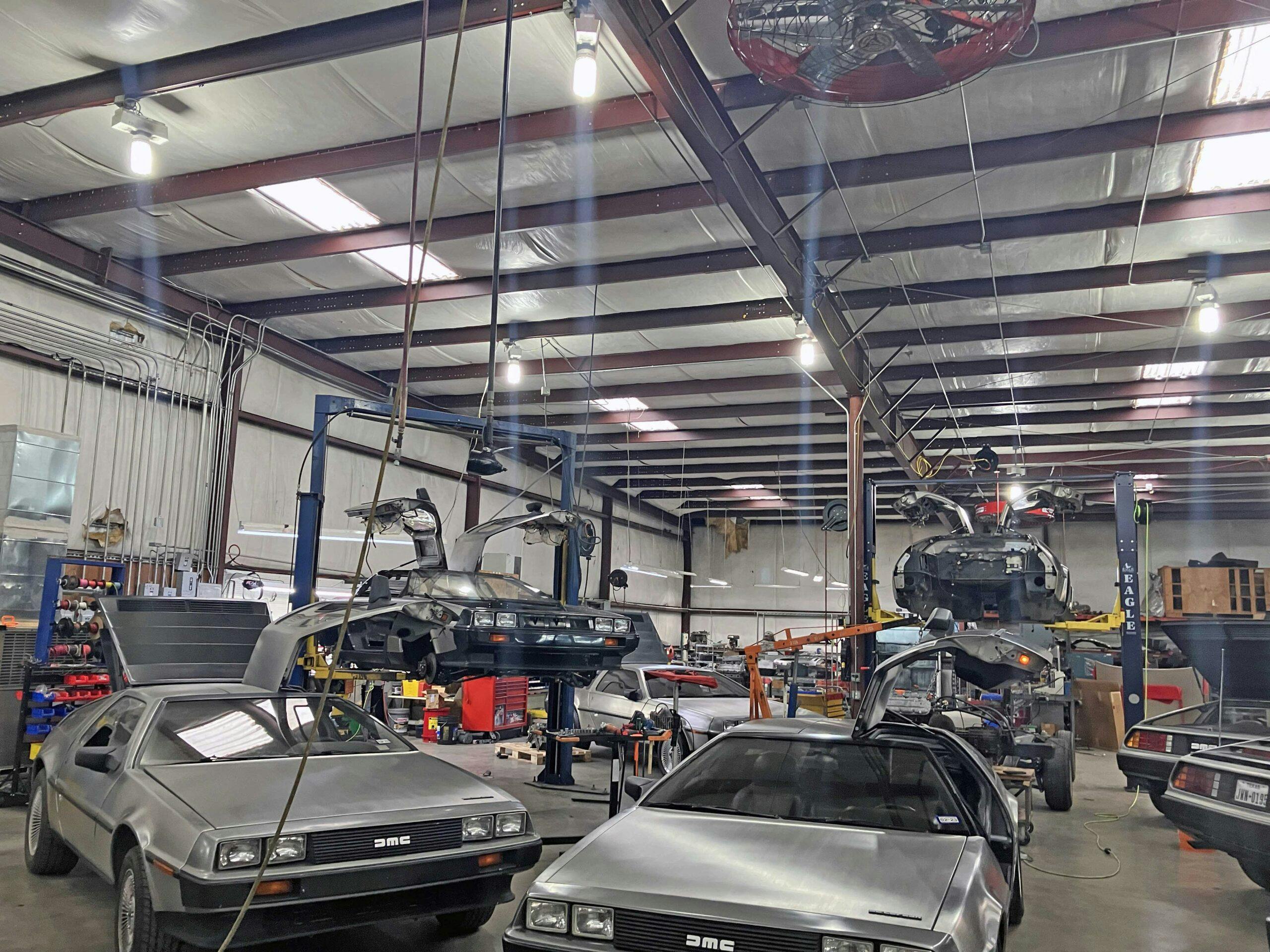


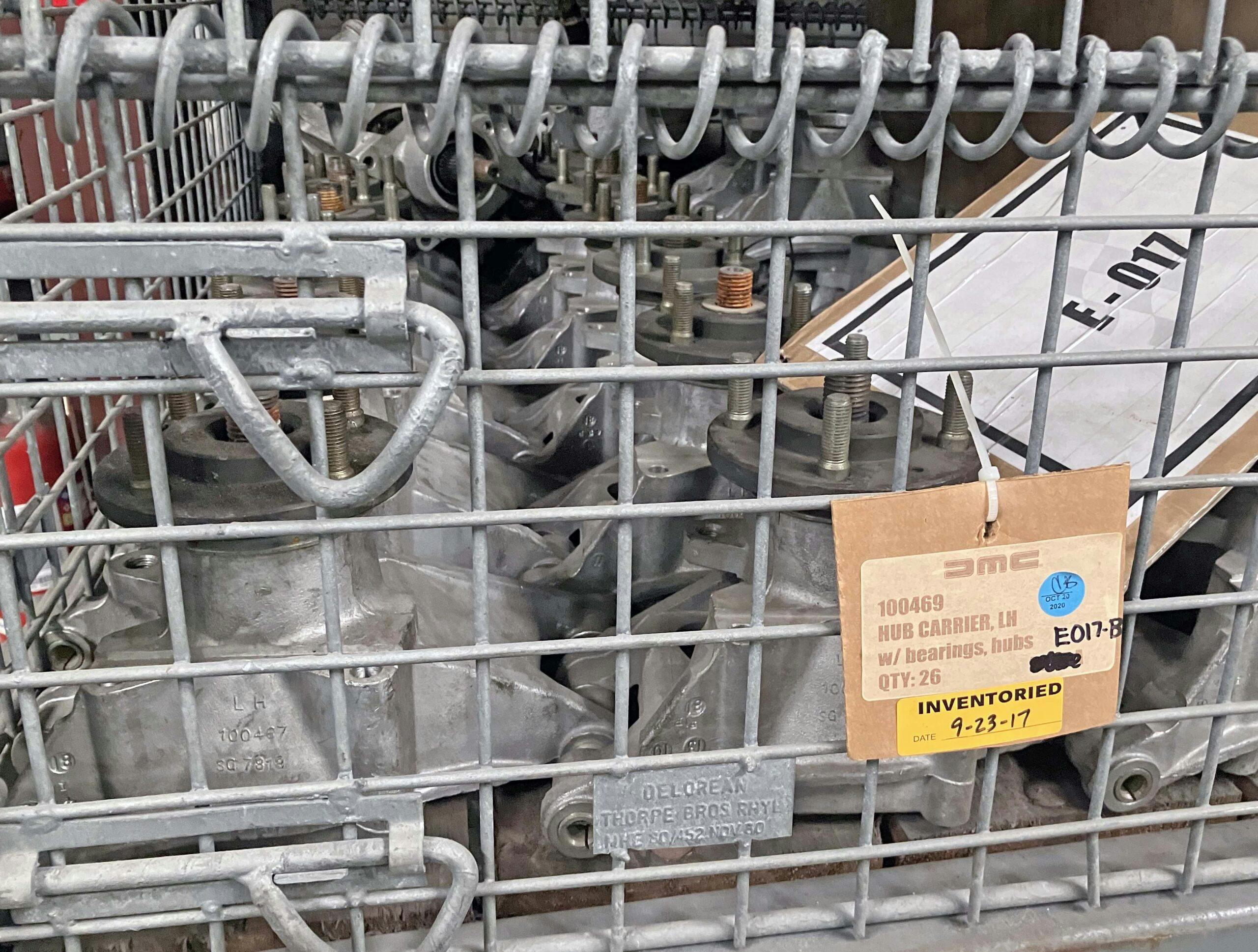



















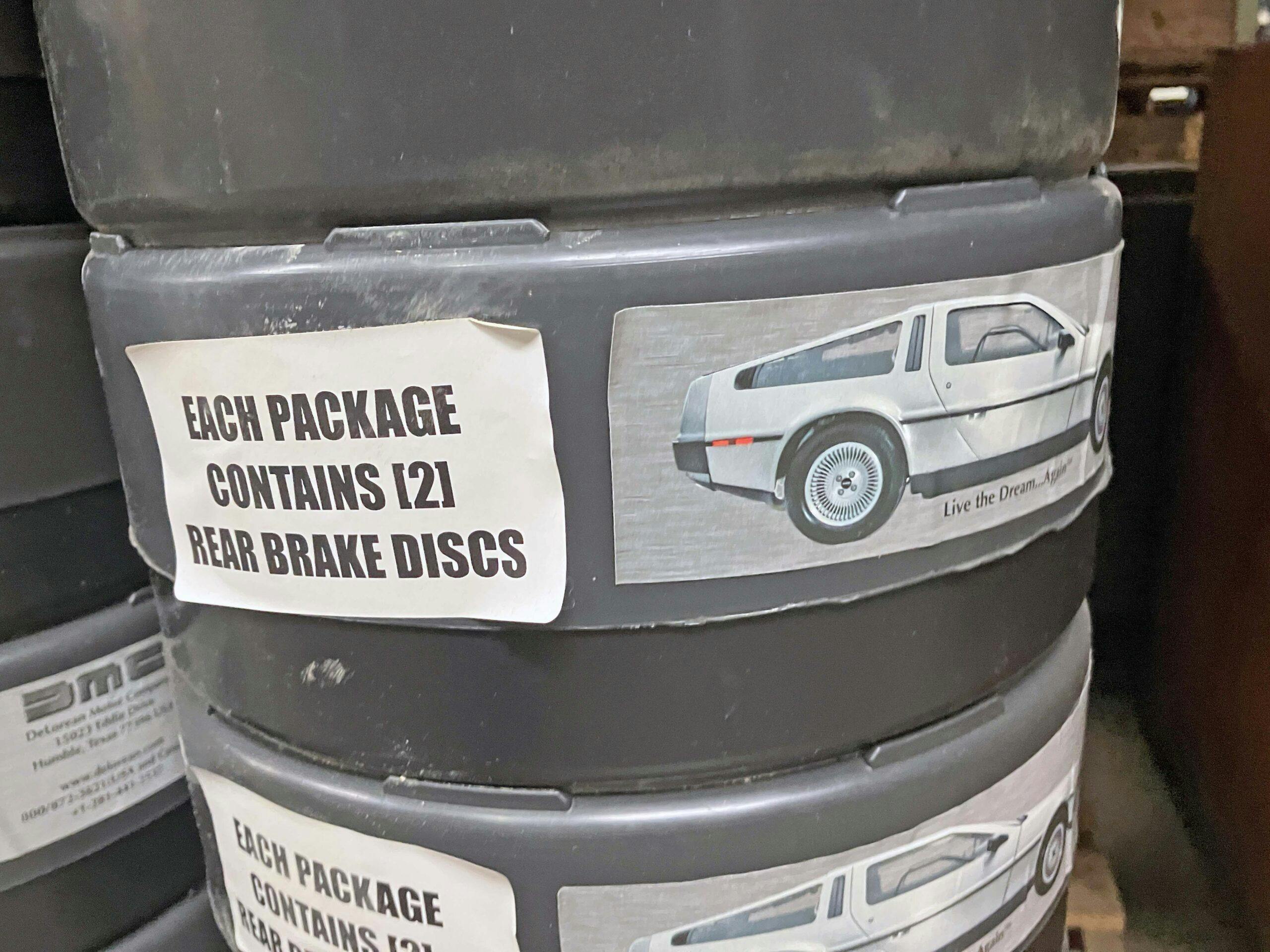





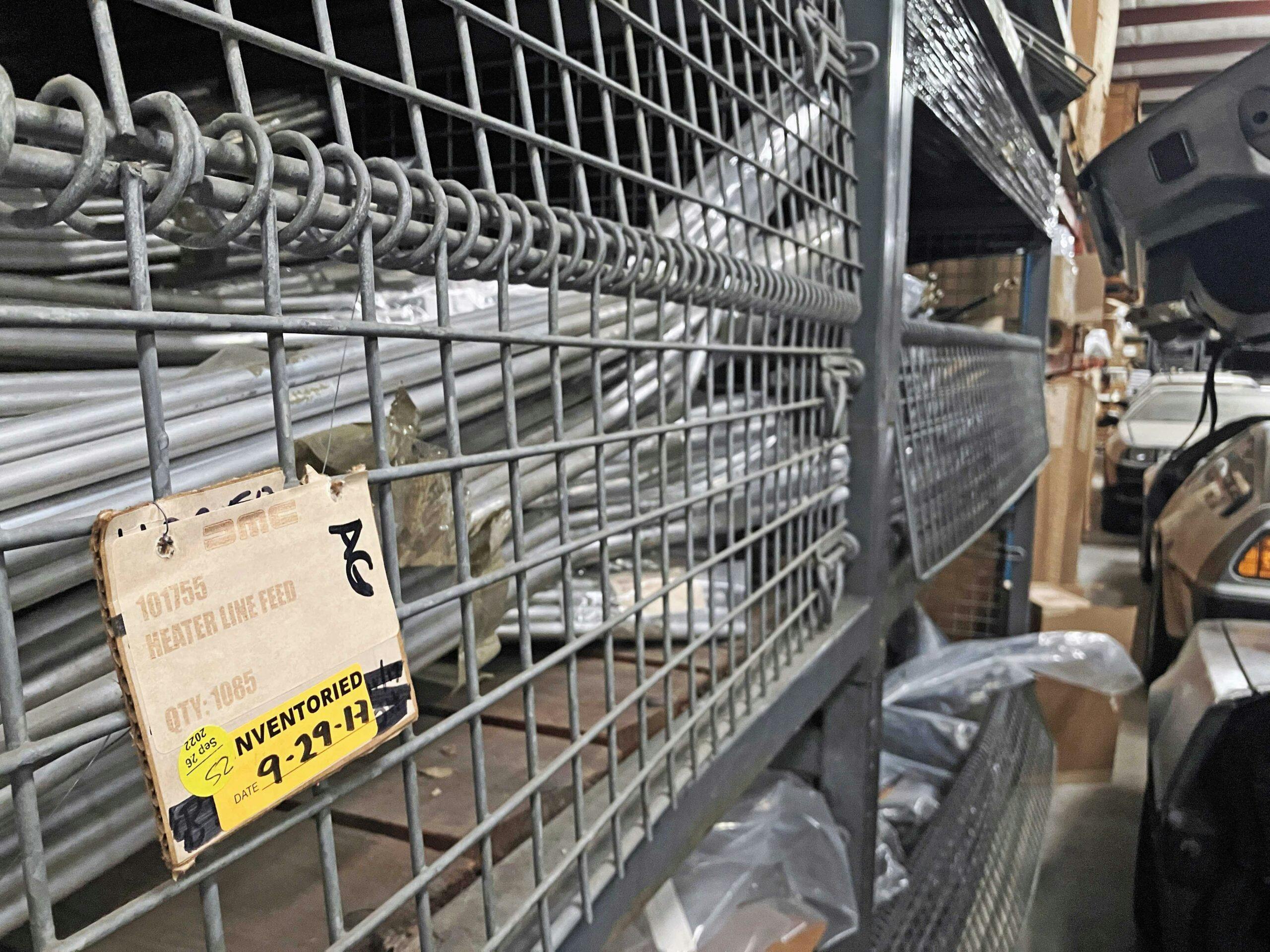














































































I’m probably not alone in thinking.. “Should’ave bought one several years back when they were sub-$20,000 cars.” .
One reason why I didn’t was I didn’t want to hear countless Back to the Future comments every time you went anywhere. I
The film has usurped the cars own history, it was a film prop (from not that good of a film,…too many sequels) more than a car.
Also, hearing the opinions from countless “experts” gets old fast.
I had an Avanti and every idiot who knew just enough to be dangerous would tell me fiction about my car.Getting has took 15 minutes. Car shows were genuinely painful. And I’m a guy who likes talking about cars.
I can only imagine what it would be like with a DeLorean.
Everyone is entitled to their opinions, but so much for a “not so good film”; those movies have one of the biggest cult followings and just synonymous with any mention of time travel. I bought my Delorean at $11k and 20 years later , the journey has been a blast. Looking fwd to 20+ more.
Completely discredited when said “not that good of a film” it’s literally studied in film schools as an example of a near perfect film.
Not that good a film?
Madness.
Very cool story. I grew up in Houston and began my custom pinstriping business there in the late 70s. All the other stripers went for new car dealers so I went for the used car lots. One of my customers in Channelview had a car lot called A&H Motors off Dell Dale. He was one of my first used dealer customers and I got his business in 1981. After a few months of striping everything he bought, he told me…”Hey, now that I know you can stripe as well as Milburn, I have 2 DeLoreans I want you to do”. I’m thinking, man that skin isn’t gonna look too good with custom striping. And then he unveiled his red and black Deloreans. They were pretty cool and Charles being the individualist guy he was, had two of the craziest stainless cars painted. I’m sure most people would have called him nuts but Charles always had this thing for originality. So, I pinstriped them with some very fine lines. Not too crazy but enough to know that they have been uniquely personalized along with the paint jobs. I striped for Charles until 2002 and no other DeLoreans since those painted ones
I owe you a beer for taking the time to relate that story. Cool
I’d like to see a completely reimagined DeLorean—the name has a certain ring to it, like Duesenberg—and the name deserves a second chance, a fresh start, one that has completely separated from the alleged negative (criminal) past.
Good luck to Kat DeLorean or whomever might be able to make this break.
I worked near a fellow (shared parking lot) who had one in late ’70s – early ’80s. There didn’t seem to be the buzz about either the movies or the cocaine when he pulled into the lot. The car folks gathered around and just admired certain things, critiqued other things, and asked him loads of questions about other things. It was like it was just an interesting car, not a car with some interesting background. I liked that. I agree with JohnB that the whole thing became a caricature – stories mattered more than the car itself. The car had its faults, to be sure, but it sure got people’s attention back then – still does.
Will thereevr be a performance version, say a “DeLorean GTO”?
I visited this place in 2016. They also had a bunch of Toyota Sera’s outside for some reason which was cool to see. Think A Toyota Tercel with butterfly doors.
Sad to hear it’s not open to the public anymore, hopefully that will change as I enjoyed going there. You got the grand tour as I didn’t go through the warehouse areas and repair bays.
“Except . . . no dealership ever scooped up a carmaker’s entire parts cache, acquired the rights to that carmaker’s name, or began reproducing factory parts for owners around the world.”
This is incorrect, Avanti Motors did it with Studebaker. They even built the Avanti at the same place, leasing it back from Chrysler when they bought the property.
Looks like I will need to amend the article! Thanks for the correction.
I really hope something like this could occur regarding the Chevrolet SSR. Love it or hate it, it’s a unique car/truck that many doubted GM would ever build. Well, they did and sold over 24000. This is more than twice the number of DeLoreans sold. The SSR currently does not have the following of the DeLorean, because it was never a “feature” car or the center of a drug investigation. It’s just a unique car/truck that was built in the early 2000s when auto manufactures built “fun” cars that were different from every other car on the road. But it’s time in the limelight is coming!
I used to be able to distinguish different model cars and they had actual names. Today a brand € model XYZ looks the same as
brand £ model 123.
The Delorean is a cool car, neat car but a very crappy sports car. No power, poor handling, poor quality etc.
But the story is interesting and the movie was just what it needed to help take the tarnish off the image.
Had the movie never used this car then we would have just another Bricklin like car that was unique but nothing great.
I have always been a big John D fan being a Pontiac fan. It pained me to see him fail at the time but today it is nice to see him being remembered in more positive ways.
The man let his ego override his common sense and he paid a big price for it along with many others. He did come to terms with that and was sorry for the damage he did. Not many would admit that.
Here on Long Island (NY) we had a facility that apparently specialized in DeLorean service and restoration.
It was in West Sayville and at any time you could find at least a dozen cars on the lot. Saw a few painted ones too.
I visited in 2018, and it was very cool. I got to sit in one, talked to the guys and bought a t-shirt. I’ve never seen so many Deloreans in one place before.
The DMC building is located in Humble TX, not Allief.
The original 1988 location was indeed in Alief.
My brother has had one for many years, he says if you ever see a painted DeLorean it’s been crashed because you can’t conceal body repair on bare metal. Also, the legal story is so old now no one he meets mentions it, they only want to talk about the movies.
Maybe a discussion with Elon is in order – a Delorian EV would be cool!
Of course Elon would tell you he invented the Delorean…